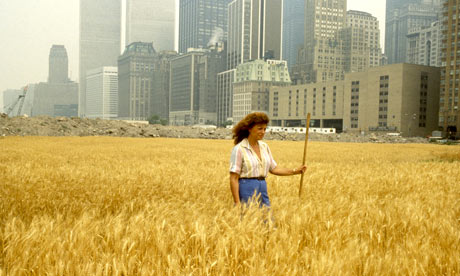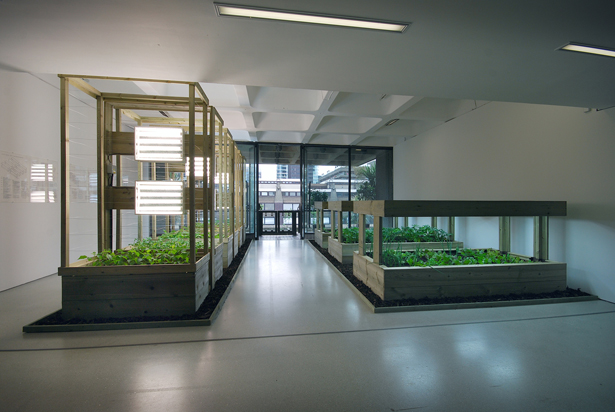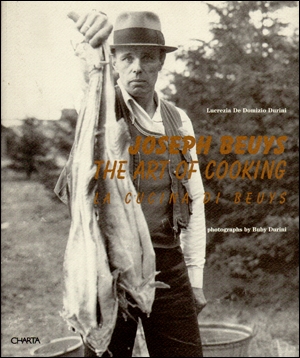
Wheatfield, a confrontation - 1982 © Agnes Denes
Radical Nature at the Barbican Centre explores Art and Architecture in a changing planet, maybe suggesting that our relationship to the natural environment is one determined by a form of activist engagement.
Outside the gallery, Agnes Denes's pioneer guerrilla gardening, a Wheatfield which was once staged on a disused site in Manhattan, is this time erected on a disused site in Hackney.
The architectural collective Exyzt is given the task to build a Mill to go with the field which turns out to be the highlight of the show as the collective builds up audience and local interaction.
© Exyzt collective flickr
 Survival Series #6 - 1973/2009 © Harrison Studio © Lyndon Douglas
Survival Series #6 - 1973/2009 © Harrison Studio © Lyndon Douglas In the first room, Survival series, a line of raised beds by Harrison studio, explores farming awareness or how biodiversity opposes to monoculture-farming.
This is where we expected to hear about permaculture farming, such as the work of Fukuoka and his Straw revolution but there is no mention of radical gardening, in fact the show doesn't even engage with activist/artistic practices that overlooks nature in urban contexts today.

© Larry Korn and Masanobu Fukuoka
Further away, when showing the work of Joseph Beuys, there is no mention of his connection to food, land and gastrosophy.
While Beuys's multi-layered mythology is installed in a complexified manner, there is no focus on his environmental engagement.
In other parts of the show, the interest comes from projects inspired by biomimicry : foam bubbles are re-used by Buckminster Fuller for his geodesic structures and by Thomas Saraceno for his Airt-Port-City, mineral accretion mirrors coral reefs in Wolf Hilbertz' ecological city, Ant Farm, with its visionary Dolphin Embassy, aspires towards inter-species communication.

Finally, one image from the Center for Land Use Interpretation does hint at what Art and Architecture in a changing planet meant to expose : the picture which scale fully emerges the viewer, shows a bird's eye view of an Alaskan pipeline cutting across miles of wilderness, forcing awareness on the way the planet is being dramatically re-shaped by human hand.

Alaskan pipeline © CLUI



No comments:
Post a Comment